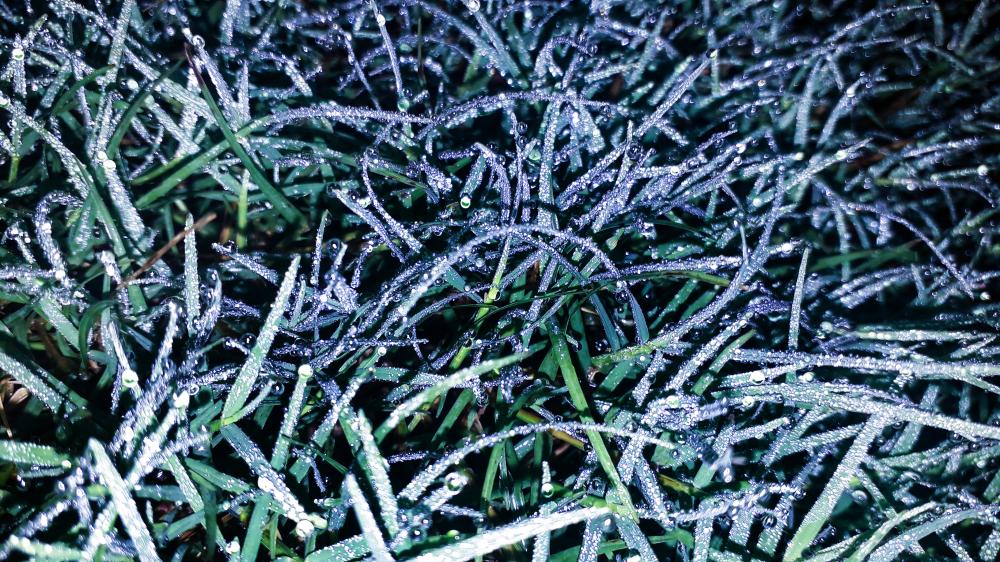Ice Melt

Introduction to Ice Melt
As the winter season approaches, bringing with it snow and ice, the safety of outdoor surfaces becomes a primary concern for many businesses and homeowners alike. At Tellus Tru, we have dedicated our efforts to understanding and solving the dilemmas posed by icy conditions. Our commitment to safety, integrity, and the well-being of our communities drives us to explore the most environmentally friendly and effective solutions for ice removal.
Understanding Ice Melt
Ice melt is a compound designed to mitigate the hazards presented by ice and snow on sidewalks, driveways, and other surfaces. By lowering the freezing point of water, ice melt prevents the formation of ice or turns existing ice into a manageable slush. In our journey at Tellus Tru, we've discovered that not all ice melt products are created equal. Each has its unique properties, applications, and environmental impacts.
Selecting the Right Ice Melt
Selecting the appropriate ice melt involves a careful consideration of the climate, the environmental impact, and the specific needs of the area being treated. Let's dive into these considerations to help you choose the most effective solution.
1. Climate Consideration
The effectiveness of ice melt depends largely on the ambient temperature. Products vary in their lowest effective temperature--some might be effective in temperatures as low as -25°F, while others might not work efficiently below 20°F. Our experience has shown that understanding the typical winter temperatures of your location is crucial in selecting an ice melt that performs when you need it most.
2. Environmental Impact
At Tellus Tru, the planet's health is paramount. When selecting ice melt, it's essential to consider its environmental footprint. Ingredients in some products can be harmful to vegetation, wildlife, and waterways. We advocate for using compounds that offer a balance between efficiency and environmental responsibility, such as those that are chloride-free and biodegradable.
Types of Ice Melt
Understanding the various types of ice melt can empower you to make informed decisions tailored to your specific needs. Here's a brief overview of the most common ingredients found in ice melt products:
- Calcium Chloride: Known for its fast-acting and low-temperature capabilities, but can be more expensive and have a higher environmental impact.
- Magnesium Chloride: Less corrosive and more environmentally friendly, effective in moderately low temperatures.
- Sodium Acetate: Biodegradable and chloride-free, making it one of the most environmentally responsible choices.
- Sodium Chloride (Rock Salt): The most cost-effective option, but not the most environmentally friendly.
Application Tips for Ice Melt
Effective application of ice melt is not just about spreading it on the ground. Timing and distribution play crucial roles in maximizing efficiency and minimizing environmental impact. From our experience, applying ice melt before a snowstorm can prevent ice from bonding to the surface, making subsequent removal efforts more manageable.
Additionally, using the right amount is critical. Over-application can lead to unnecessary pollution and damage to surfaces or vegetation. At Tellus Tru, we recommend using a spreader to ensure even distribution and adhering to the manufacturer's guidelines on application rates.
Personal Insights on Ice Melt
In our journey at Tellus Tru, we've learned the importance of balancing effectiveness with environmental friendliness. One notable insight is the potential of liquid ice melt as a pretreatment option. Its ability to prevent ice from adhering to surfaces without the overuse of harmful chemicals marks a significant advancement in ice management strategies.
Creative Solutions in Ice Management
Our mission at Tellus Tru extends beyond simply offering products. We're invested in innovating solutions that redefine the approach to managing ice and snow. For instance, exploring the use of geothermal heating elements under walkways and driveways presents an exciting, albeit long-term, solution to ice accumulation without the need for chemical deicers.
Through collaborations and leveraging our networking strength, we're always on the lookout for advancements in technology and methodology that align with our values of safety, integrity, and environmental stewardship.
Conclusion
Choosing the right ice melt is a decision that impacts not only the safety of our immediate environments but also the well-being of our planet. At Tellus Tru, we are committed to guiding our clients toward solutions that are safe, effective, and environmentally conscious. We understand that each scenario is unique, and we're here to provide personalized advice based on our extensive experience and dedication to your needs. The journey towards a safer, greener winter is one we're proud to lead, inviting all to join us in making informed decisions for a sustainable future.

What is the most effective ice melt?
In our experience at Tellus Tru, we've found that the effectiveness of ice melt varies greatly depending on several factors, such as the ambient temperature and the specific needs of the area. If I were to highlight one particular type, calcium chloride stands out due to its fast-acting nature and capability to work at extremely low temperatures, as low as -25°F. However, it's important to remember that while it's highly effective, its environmental impact and cost may not make it the best choice for everyone. When selecting an ice melt, it's crucial to balance efficiency with environmental responsibility and economic feasibility.
What is the fastest way to melt ice?
The fastest way to melt ice is by using a high-performance ice melt product like calcium chloride, which starts working immediately upon application and is capable of breaking through thick ice quickly. However, here at Tellus Tru, we often recommend considering not just speed but also the method of application and environmental considerations. Sometimes, a combination of pre-treatment with liquid ice melt and timely application of granular agents can offer a more sustainable approach without sacrificing too much in the way of speed.
Does ice melt damage concrete?
Yes, certain types of ice melt can damage concrete, particularly if it's new or poorly sealed. Products containing chloride, such as sodium chloride or calcium chloride, can cause concrete to deteriorate faster due to chemical reactions that occur when these compounds interact with moisture and the concrete itself. At Tellus Tru, we often advocate for more concrete-friendly options like magnesium chloride, which is less corrosive, or even completely chloride-free products, in areas where concrete integrity is a concern.
Does ice melt really work?
Absolutely, ice melt works by lowering the freezing point of water, effectively preventing ice formation or transforming existing ice into a slushy, more manageable state. The key is choosing the right product for your specific conditions and applying it correctly. Timing, quantity, and method of application all play critical roles in maximizing the efficiency of ice melt, ensuring safety while minimizing environmental impact.
How does ice melt affect the environment?
The environmental impact of ice melt can be significant, depending on the type of product used. Chloride-based deicers, for instance, can pose threats to aquatic life, vegetation, and groundwater due to runoff. That's why at Tellus Tru, we're big proponents of using more environmentally friendly options whenever possible, such as biodegradable or chloride-free products. Protecting our planet is a collective responsibility, and choosing the right ice melt is a step in the right direction.
Are there alternative solutions for ice management?
Indeed, there are innovative and eco-friendly solutions for managing ice and snow. One method we're excited about at Tellus Tru is the use of geothermal heating elements beneath driveways and sidewalks. While it's a more substantial upfront investment, it offers a long-term solution to ice accumulation without the need for chemical deicers. Additionally, we see significant potential in liquid deicers as a pre-treatment strategy to prevent ice adherence, substantially reducing the amount of product needed and minimizing environmental impact.
What are some best practices for applying ice melt?
Effective application of ice melt involves more than just scattering it on icy surfaces. At Tellus Tru, we recommend applying it before snowfall begins to prevent ice from bonding to the surface. Using a spreader can help ensure even distribution, avoiding over-application which not only harms the environment but can also damage the surfaces you're trying to protect. Always follow the manufacturer's guidelines regarding application rates, and consider the specific conditions of your area to optimize both safety and environmental responsibility.
Resources
- Environmental Protection Agency (EPA) - The EPA provides information on the environmental impact of various ice melt products and offers guidance on selecting environmentally friendly options.
- Purdue University Extension - The Purdue University Extension gives insights into the different types of ice melt and their effectiveness in varying temperatures.
- USDA Forest Service - The USDA Forest Service offers resources on the environmental impact of ice melt products on vegetation and wildlife.
- Centers for Disease Control and Prevention (CDC) - The CDC provides information on winter weather safety, including tips on the effective use of ice melt to prevent slips and falls.